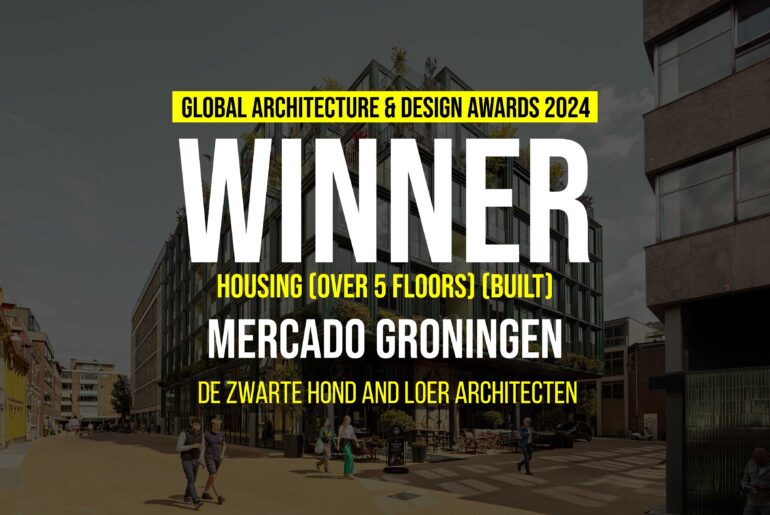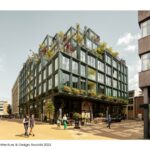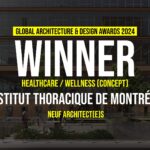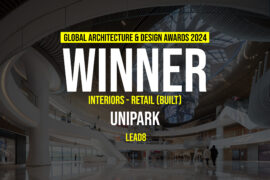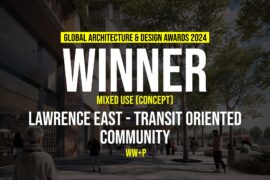With the completion of Mercado and the redevelopment of the Rode Weeshuisstraat, the north side of Groningen city centre has received a quality boost. The Mercado building and the new adjacent Stalplein, embody the transformation of the city and its new focus on pedestrians and encounters.
Global Design & Architecture Design Awards 2024
First Award | Housing (Over 5 Floors) (Build)
Project Name: Mercado Groningen
Category: Architecture – Housing (over 5 floors) (Built)
Studio Name: Architect combination De Zwarte Hond and Loer Architecten
Design Team: Architect combination De Zwarte Hond and Loer Architecten
Area: 8.436 m2
Year: 2023
Location: Groningen, Netherlands
Consultants:
- MEP Consultant: ABT Wassenaar
- Building Physics Consultant: Noorman Bouw- en milieuadvies
- Greenery consultant: Areaal en Sempergreen
Photography Credits: Sebastian van Damme, Marcel Ijzerman
Render Credits: n.a.
Other Credits:
- Client: MWPO and Beauvast
- Construction company: Plegt-Vos
- Structural Engineer: Dijkhuis Ingenieurs
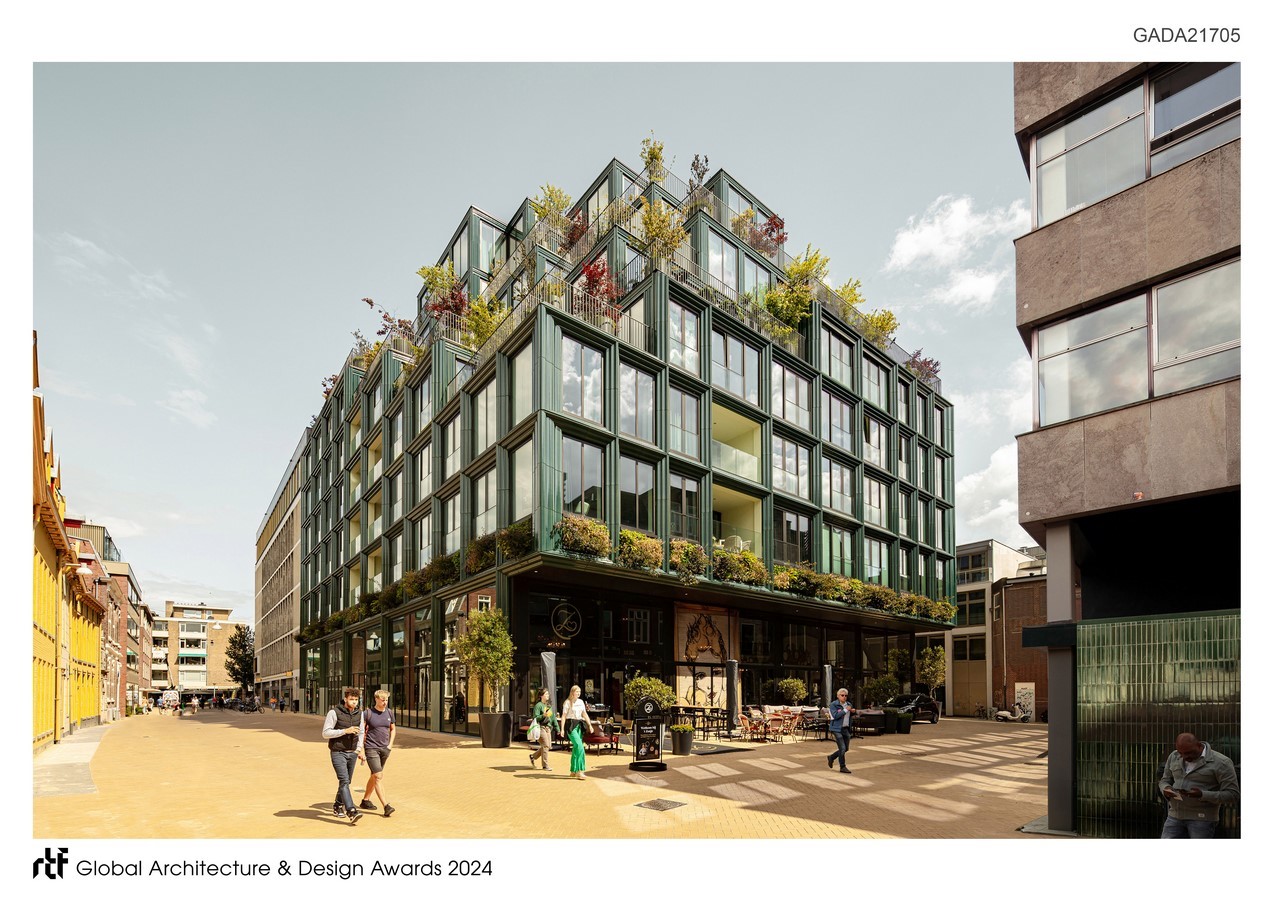
Mercado’s design and the urban plan for the Rode Weeshuisstraat were created by the architectural partnership of De Zwarte Hond and Loer Architecten for the developers MWPO and Beauvast. Mercado has a monumental plinth topped by 41 sustainable apartments.
Revitalizing the northern city centre
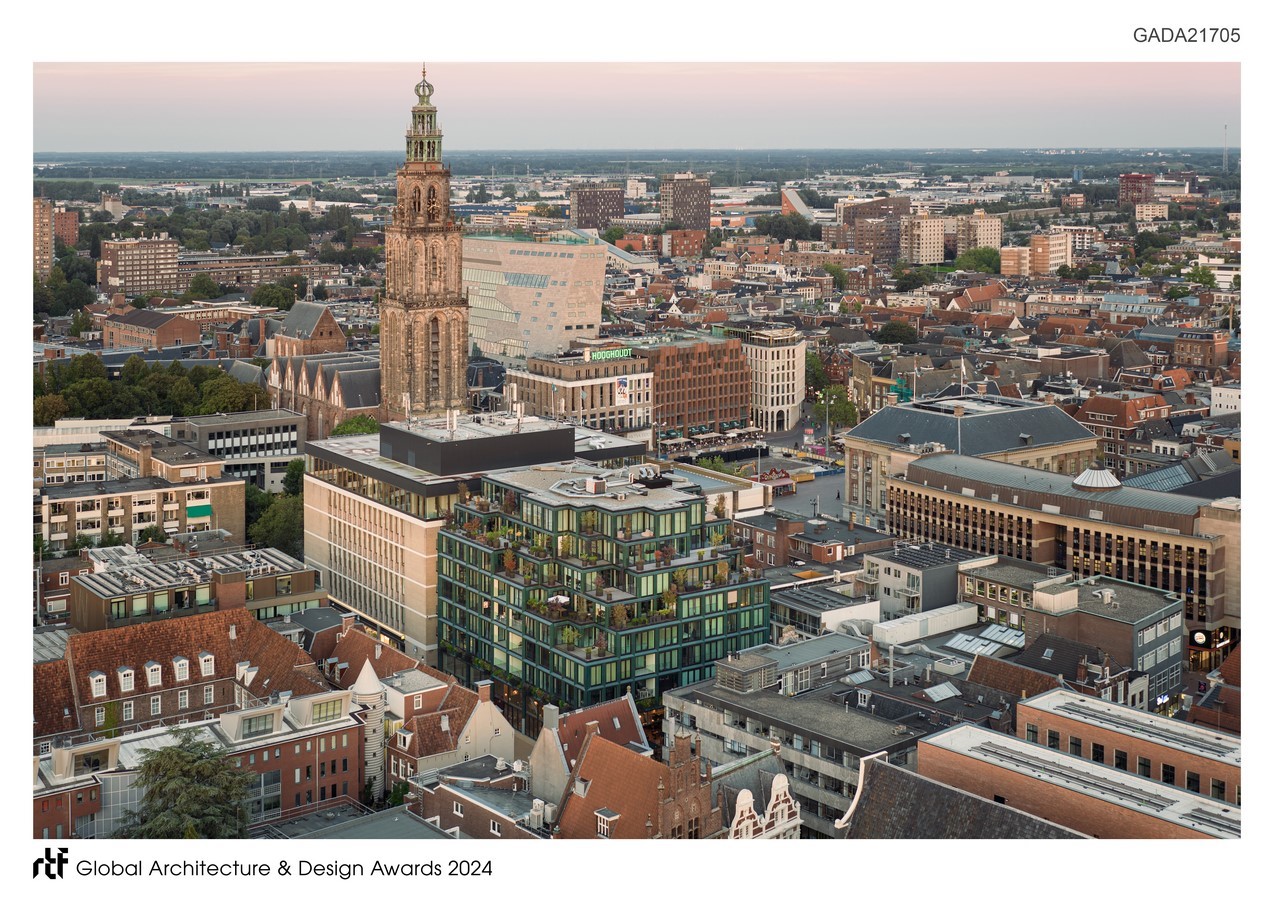
In the new urban plan, Rode Weeshuisstraat is no longer the back of the Grote Markt, but the front of the northern city centre. Additionally, cars make way for pedestrians and Mercado – which replaces a former V&D warehouse – creates space for a new city square with a more compact footprint. The redesign of the street is combined with a generous, transparent six-metre-high plinth, which together with the new square forms a meeting place.
Connecting scales

In terms of scale, Mercado forms the link between the Grote Markt and the Rode Weeshuisstraat. The buildings on the Grote Markt are on a larger scale than the buildings on the north side of Rode Weeshuisstraat, including the former orphanage (Weeshuis) itself. The Mercado combines these scales through its stepped volume. Higher where possible, lower where necessary. The result is a building that fits well into the city centre in terms of scale yet is unique.
Craftsmanship and individuality
Ceramic tiles were used for the façade of Mercado. In close collaboration with the ceramic manufacturer NBK and façade builder Bijlbouw, samples and mock-ups were used to find the perfect green-blue glaze with a sheen that changes colour with the weather. These large ceramic elements show real craftsmanship and refer to the richness of Groningen’s historic buildings and the rawness of the architecture of the post-war reconstruction, characterized by glass, precast concrete and natural stone. With its beige clay and semi-transparent glaze, Mercado blends in well with the pastel plaster façades of the orphanage and the stone-like materials of the post-war block.
Flexible and gas-free

The ground floor has been future-proofed by placing the stairs and lifts on the side of the building. This creates an open, monumental space that can be flexibly arranged for public events. Boreholes for thermal energy storage (TES) have been dug under the building. Combined with heat pumps, the entire building is entirely free of natural gas.
Integrating biodiversity and nature
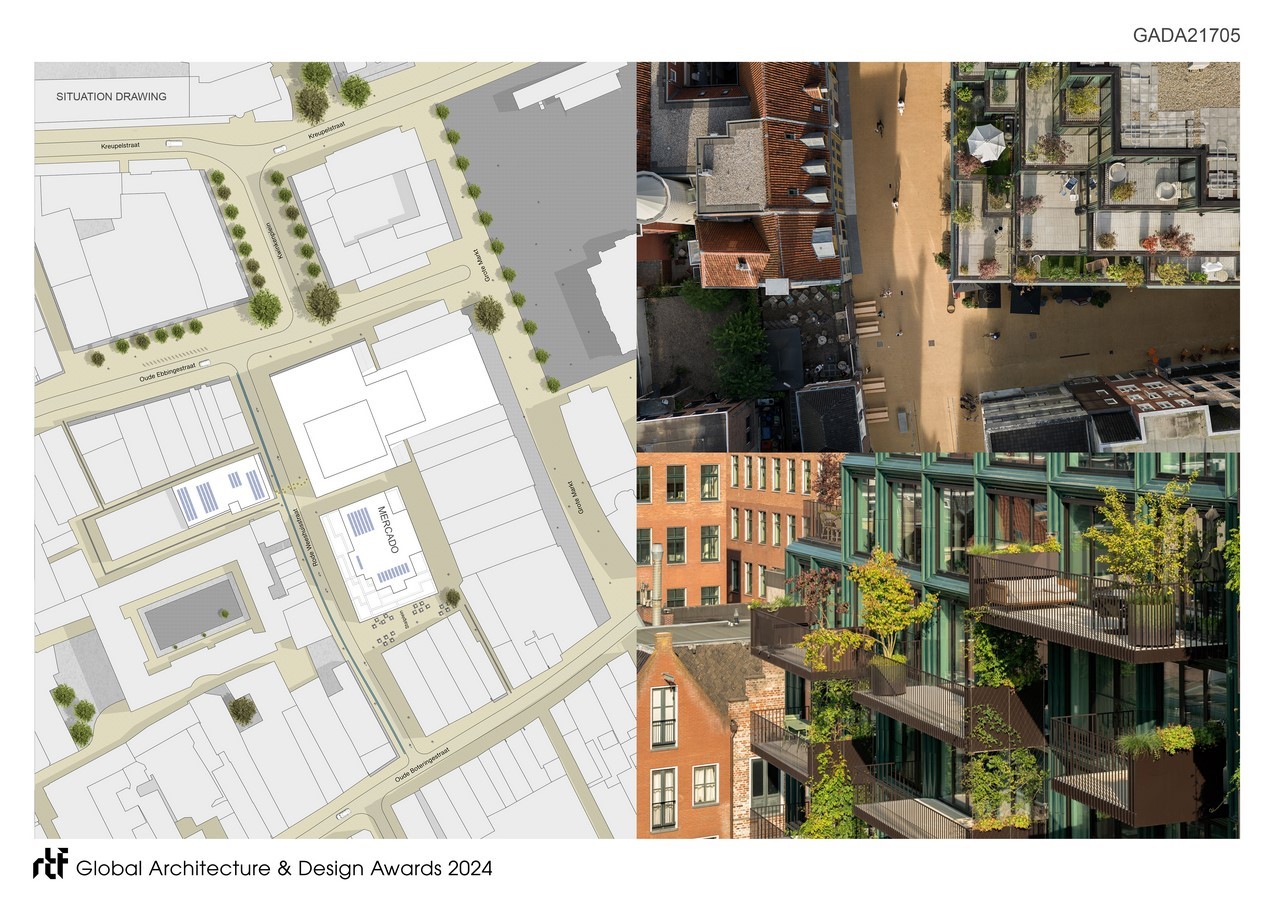
The vertical garden along the façade provides the building with 3,800 plants and contributes to biodiversity. On the south façade, the balconies are equipped with climbing plants as a green screen. The stepped volume of the building provides space for roof terraces where colourful plants and trees are part of the design. Special planters have been designed for the building with a unique colour scheme to match the building. Both the roof terraces and the façade gardens are watered by a computerized system and regularly maintained by a gardener.

